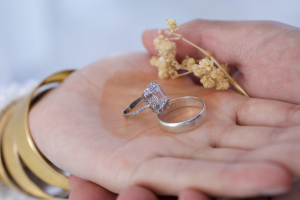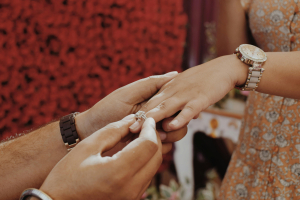GBP
/
GBP
/
Shipping to:
Currency:
How Lab-Grown Diamonds Are Made: Behind the Scenes of the Process
Lab-grown diamonds have captivated the jewellery industry and consumers alike, offering an ethical and sustainable alternative to mined diamonds. With their striking similarity to natural diamonds, these created gems spark curiosity about how they’re crafted. Let’s dive behind the scenes to explore how lab-grown diamonds are made, from choosing growth methods to refining each stone, so you can see just how science brings these precious gems to life.
What Are Lab-Grown Diamonds?
Lab-grown diamonds, sometimes called man-made or synthetic diamonds, are created in specialised facilities that replicate the natural processes of diamond formation. Despite common misconceptions, they’re far from diamond lookalikes. Lab-grown diamonds possess the same chemical, physical, and optical properties as natural diamonds, making them identical to the untrained eye. For more about the science and precision behind these gems, check out lab-grown diamonds in detail.
The primary distinction lies in their origin: lab-grown diamonds are cultivated in controlled environments, while natural diamonds form over billions of years under immense heat and pressure deep within the Earth.
Why Choose Lab-Grown Diamonds?
Lab-grown diamonds present a range of advantages, making them an attractive option for environmentally and socially conscious buyers. Compared to natural diamonds, lab-grown stones often come at a lower price point, making luxurious, high-carat diamonds more accessible. If you’re looking for options in various shapes, explore round lab-grown diamonds or cushion-cut diamonds for popular choices.
More importantly, lab-grown diamonds have a smaller environmental footprint, as they don’t involve the extensive mining process required for natural diamonds. Many consumers appreciate this eco-friendly quality and the assurance of ethical production, free from the concerns of conflict diamonds often associated with mined stones.
The Technology Behind Lab-Grown Diamonds
Creating a diamond in a lab involves cutting-edge technology, as scientists recreate the conditions found deep in the Earth. Two main methods are used to grow diamonds: High-Pressure, High-Temperature (HPHT) and Chemical Vapour Deposition (CVD). Each technique replicates the natural environment that fosters diamond formation, yielding high-quality diamonds in a fraction of the time it takes nature.
Choosing the Growth Method – HPHT vs. CVD
High-Pressure, High-Temperature (HPHT) Method
The HPHT method is one of the oldest and most established techniques for producing lab-grown diamonds. In this process, a small diamond seed is placed in a machine that subjects it to intense pressure—about 1.5 million pounds per square inch—and extreme temperatures exceeding 1,500°C.
These conditions cause carbon to melt around the seed, crystallising into a larger diamond. The HPHT method mimics the Earth’s deep crust, where natural diamonds form, resulting in high-quality diamonds suitable for jewellery. However, this method can be more energy-intensive than CVD and may produce diamonds with slight colour variations.
Chemical Vapour Deposition (CVD) Method
CVD is a newer, innovative method of growing diamonds that has gained popularity due to its efficiency and versatility. In the CVD process, a diamond seed is placed in a vacuum chamber filled with carbon-rich gases like methane. The gases are heated to around 800°C, causing carbon atoms to separate and settle onto the seed, gradually forming layers of diamond.
This method allows precise control over the diamond’s size, quality, and even colour, making it highly desirable for producing gems that are both beautiful and sustainable.
Creating the Diamond Seed
Regardless of the method used, the creation process always starts with a diamond seed—a small piece of existing diamond that serves as a foundation. This seed acts as the blueprint for growth, guiding carbon atoms to arrange themselves into a crystalline structure. The quality of the seed can significantly affect the final diamond’s purity, clarity, and growth speed, making it a crucial step in the process.
For those interested in specific diamond shapes crafted from quality diamond seeds, explore pear-shaped lab-grown diamonds and radiant-cut lab-grown diamonds for unique choices.
The Growth Phase – Diamond Crystals Forming
Once the diamond seed is set, the growth phase begins. Under carefully controlled conditions, carbon atoms bond to the seed in a process that gradually expands the diamond. The duration of the growth phase varies, often taking several weeks, depending on the desired size and quality of the diamond. During this time, technicians monitor and adjust the environment to ensure that impurities are minimised, and the diamond remains structurally sound.
Refining the Diamond – Cutting and Polishing
After the growth phase, the newly formed diamond, though complete, is still in its raw state. This is where skilled diamond cutters step in to shape and refine it. Using advanced laser technology and traditional tools, cutters carefully slice and shape the diamond to bring out its optimal brilliance.
For examples of lab-grown diamonds cut to maximise sparkle, check out princess-cut lab-grown diamonds and emerald-cut diamonds.
Quality Control and Grading
Before lab-grown diamonds reach jewellers, they undergo rigorous quality control and grading to ensure they meet industry standards. Leading gemological labs like the Gemological Institute of America (GIA) and the International Gemological Institute (IGI) assess lab-grown diamonds using the same 4Cs grading system applied to natural diamonds: Carat, Cut, Colour, and Clarity. This meticulous grading process guarantees that each lab-grown diamond meets high standards, offering consumers the same level of quality assurance they expect from natural diamonds.
Environmental Impact of Lab-Grown Diamond Production
Lab-grown diamonds are celebrated for their eco-friendly production, boasting a significantly smaller environmental impact than mined diamonds. Unlike traditional diamond mining, lab-grown diamonds require less land disruption and conserve natural resources, as they do not demand the vast quantities of water and energy needed to extract diamonds from the Earth.
For buyers interested in the ethical and eco-friendly benefits of lab-grown diamonds, fancy coloured lab-grown diamonds offer unique options with a reduced environmental footprint.
Debunking Common Myths About Lab-Grown Diamonds
Despite their popularity, lab-grown diamonds are still surrounded by myths. One common misconception is that they lack the durability of natural diamonds. In reality, lab-grown diamonds are just as hard as their natural counterparts, making them equally suitable for daily wear.
Another myth is that lab-grown diamonds lack value; however, as technology advances and consumer interest grows, lab-grown diamonds are becoming highly sought after in their own right. Rest assured, lab-grown diamonds are indeed genuine diamonds, crafted with precision and care.
Future of Lab-Grown Diamonds: Trends and Innovations
The lab-grown diamond industry continues to evolve, driven by technological advancements and rising consumer demand. The future holds exciting potential for even more sustainable practices, customisable diamond colours, and unique cuts tailored to individual preferences. As awareness of ethical and eco-friendly jewellery grows, lab-grown diamonds are set to play an increasingly prominent role, offering a luxurious yet conscientious choice for those seeking something unique.
Conclusion: Why Understanding the Process Matters
The journey of lab-grown diamonds, from seed to sparkling gem, showcases a fascinating blend of science and artistry. Understanding how these diamonds are made sheds light on the sustainable, ethical advantages they bring to the world of fine jewellery.
For anyone looking to buy a diamond, lab-grown options provide not only a beautiful gemstone but also a mindful choice for the planet. With lab-grown diamonds, beauty truly begins beneath the surface.
FAQs
Are lab-grown diamonds cheaper than natural diamonds?
Yes, lab-grown diamonds are generally less expensive than natural diamonds, making them a more affordable option for consumers. For those seeking high-quality options, wholesale lab-grown diamonds can offer exceptional value. This price difference is due to the efficient production process, which doesn’t involve the costly mining and distribution associated with natural diamonds.
How long does it take to grow a lab-grown diamond?
Lab-grown diamonds typically take several weeks to grow, depending on the desired size and quality. While this is much shorter than the billions of years required for natural diamonds to form, the process still requires careful attention and precision.
Do lab-grown diamonds hold their value?
Lab-grown diamonds may not hold their value as well as natural diamonds, mainly because of their lower production cost and the abundance of supply. However, they are an excellent choice for buyers looking for beauty, ethical sourcing, and value in their initial purchase.
Are lab-grown diamonds detectable by the naked eye?
No, lab-grown diamonds are visually indistinguishable from natural diamonds to the naked eye. Specialised equipment and tests are needed to differentiate between the two, as lab-grown diamonds exhibit the same sparkle and clarity as mined diamonds.
Can lab-grown diamonds be customised?
Absolutely! Lab-grown diamonds can be customised in terms of size, colour, and even shape, providing more versatility for buyers looking for a unique or personalised diamond. For more inspiration, explore heart-shaped lab-grown diamonds for a one-of-a-kind design.
This article offers a thorough exploration of lab-grown diamonds, providing readers with insights into their creation and sustainable advantages.







